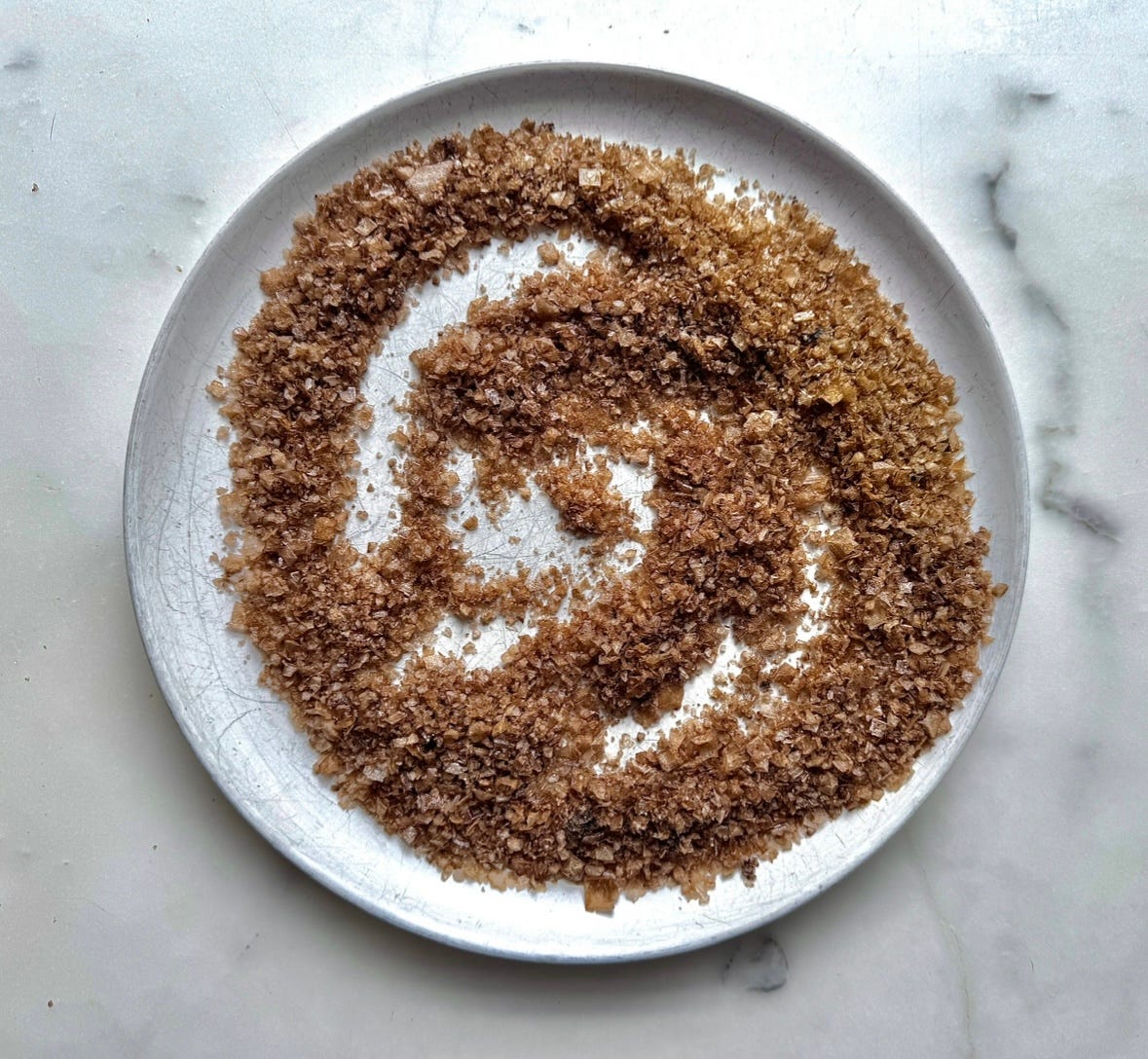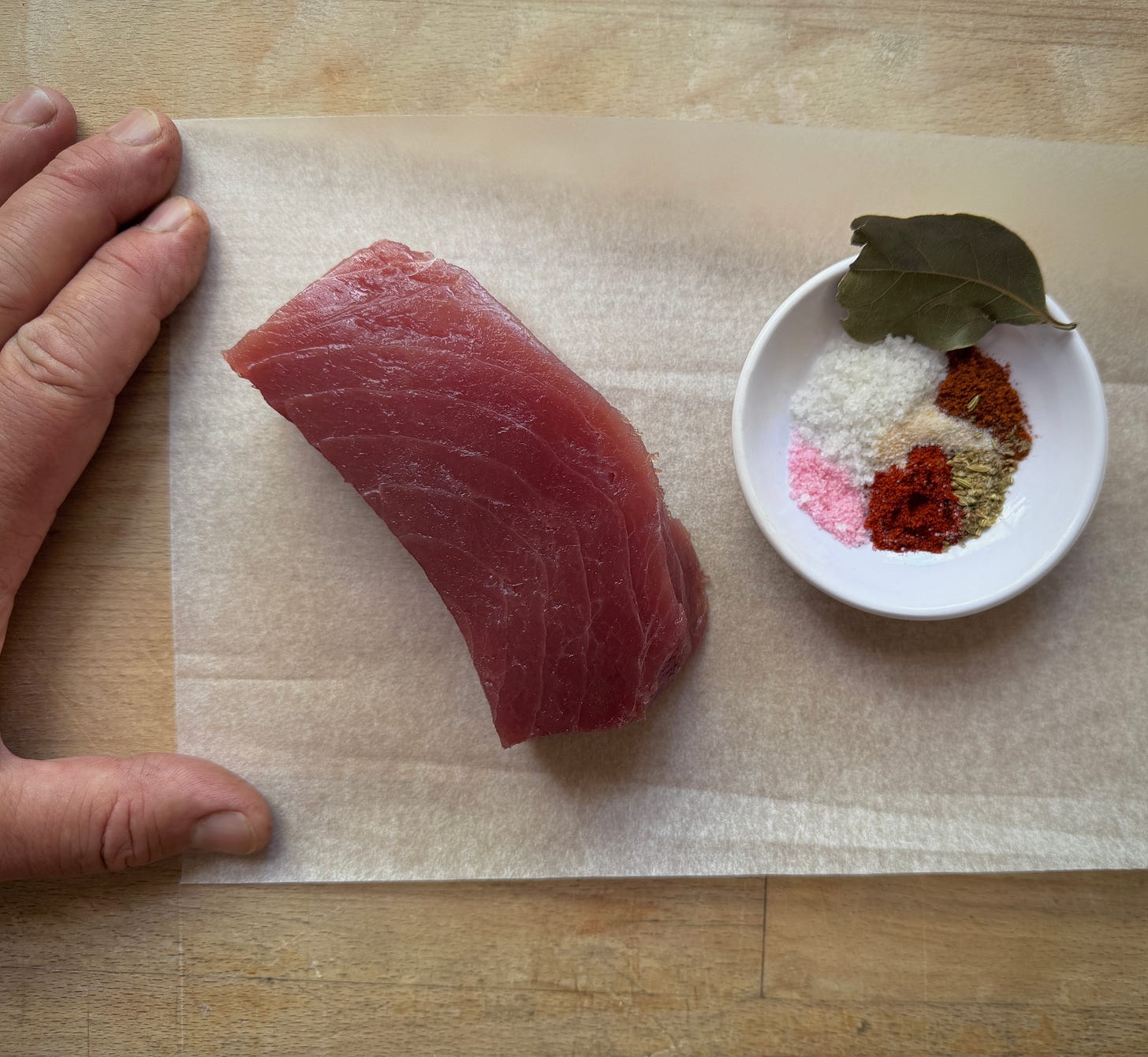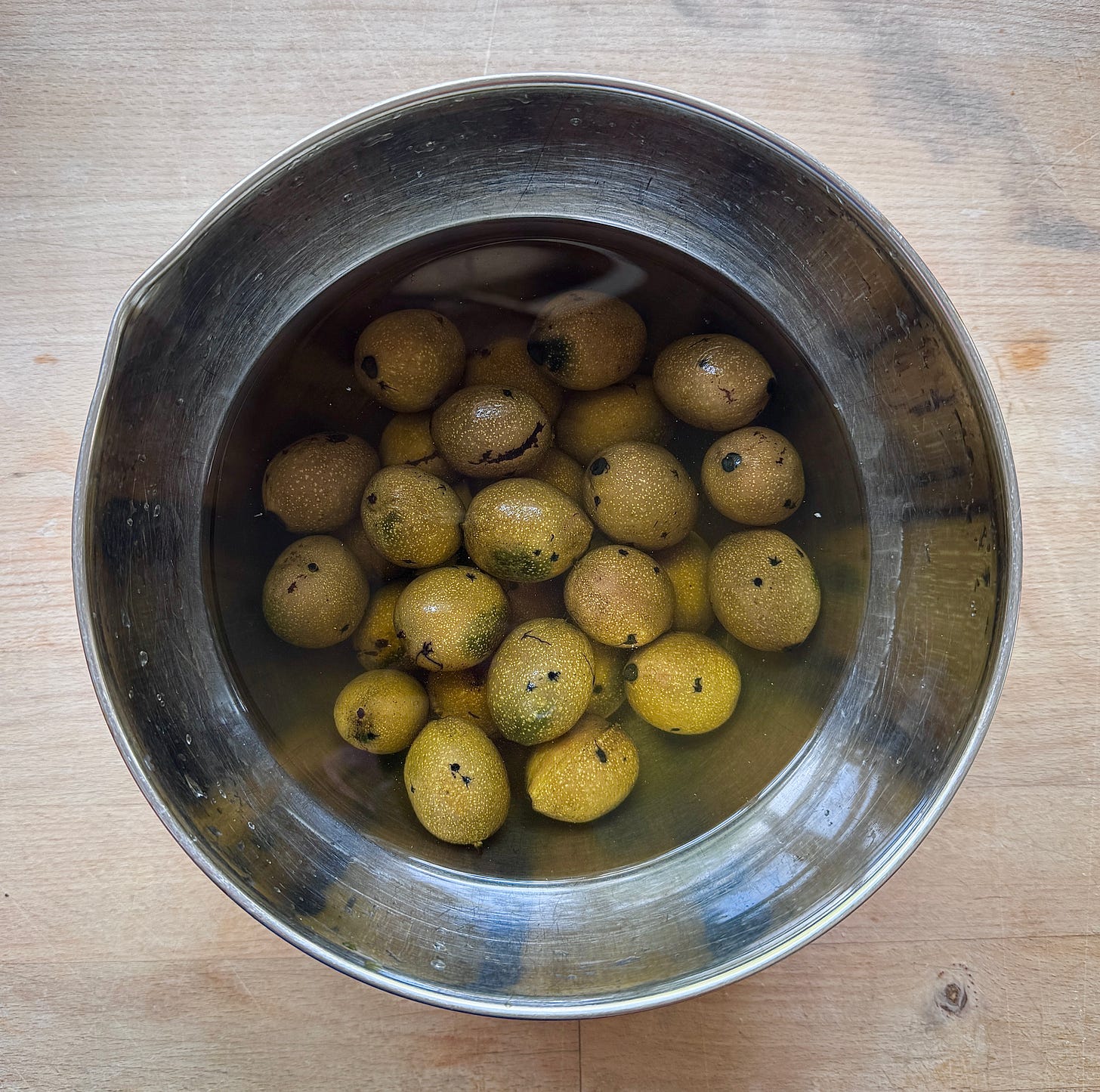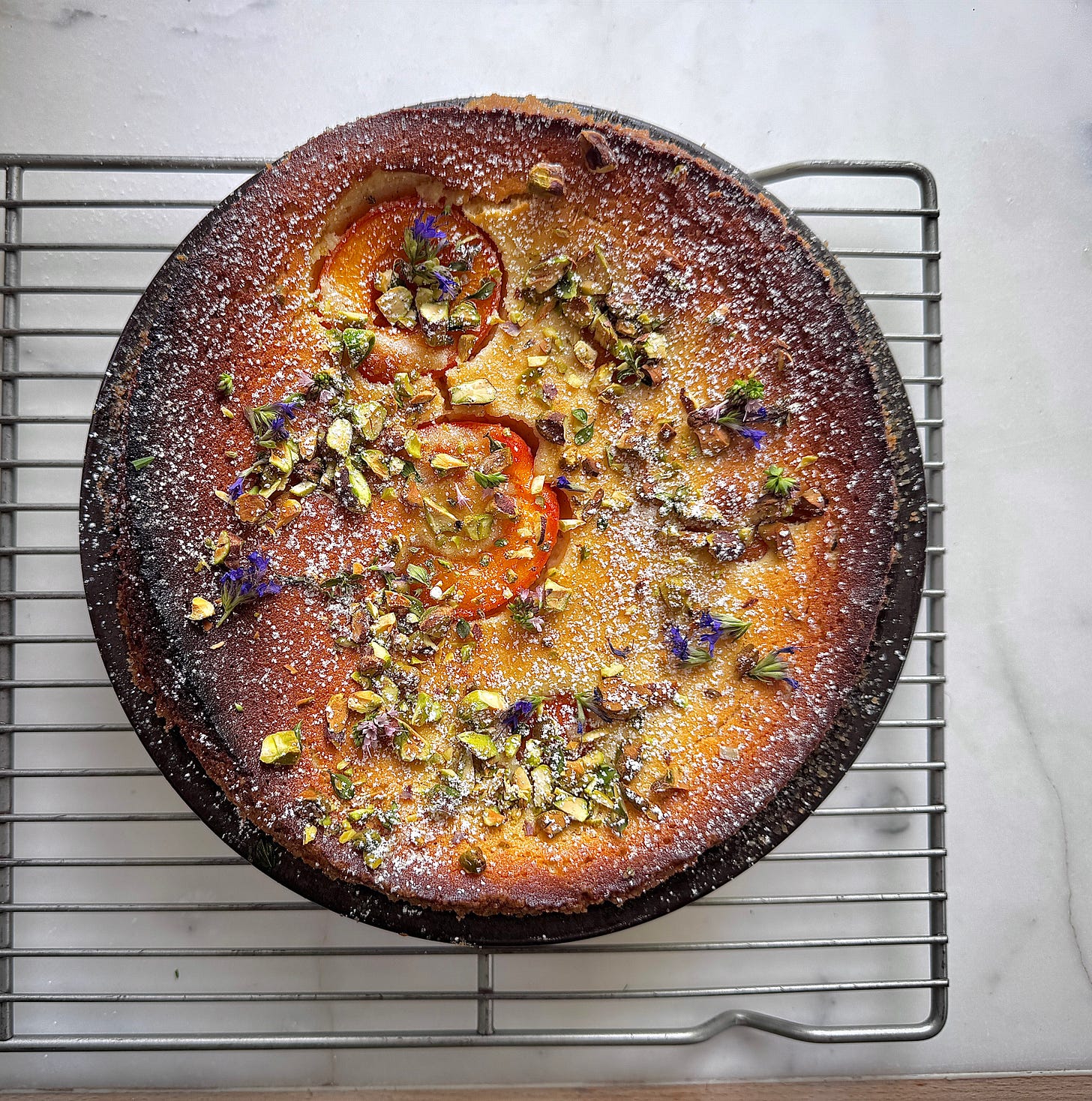“Inspiration usually comes during work, rather than before it.”
Madeleine L’Engle 1918- 2007
West Berkshire, June 2025
Influence
There is an art of knowing when to stop with a dish, which I never quite understood as a young cook. “It doesn’t need it” I was once told by a particularly irascible Chef I worked for and I simply couldn’t understand the point as in my mind, restraint wasn’t an option. Gilding the lily over and over was what I thought was correct, inspired by ‘White Heat’ and all that stemmed from that heady era of cookery.
I am influenced now simply by what I know is about to come into season, what is ready to pull from the vegetable beds or the hedges at the edges of the fields. I find that a smell might trigger a thought which might lead to an idea, a visual image that I can reverse engineer. To be able to think sideways with flavours, to taste in my head, to find links in nature that will work on the plate, luckily is easy for me, and combined with techniques such as charring, salting, preserving and smoking, I’m able to create the flavours that I use.
I was always able to write menus off the cuff, though what I found was that usually by the time I’d tested and printed it, I’d already changed my mind on half of the dishes, much to the annoyance of most of the chefs and GM’s I’ve worked with, though I can still stare blankly at my laptop for hours when faced with putting down words, and I imagine this to be the same for all of us who write for others to read, though give me a chunk of bluefin or a wild sea bass and I will have any number of ideas ready to go in my head in under a minute. And as far as originality is concerned, I find that I just don’t like to repeat myself so that way it’s never really a problem.
Simplicity is a concept that I’ve learned to love and one that challenges me. My work has always been about creating flavour and the pursuit of that goal is forefront in my mind. Surely though no one can truly lay claim to flavour, so taking influence from others, adapting and making something your own is part of the process; it is the consideration of the subtleties of ingredients that forms a way of thinking about how taste works.
Inspiration
A Sea bream still rigid with rigor, stripped down to its fillets and bones is the starting place for an idea. I will lay it in front of me, carefully looking at its colours and structure. I will think about the weather, the season and anything that’s relevant to me that day, perhaps something I’ve read about or I’ve seen or eaten. How I might cut it, whether to give it a quick sweet brine in mirin or to rub in an aromatic salt to firm it up. To eat it raw I must take off its skin, leaving me with thick pearlescent edged fillets of creamy white muscle, a thin, subtle layer of fat covering the lateral line. Should I slice it thinly, dice it into little cubes, or laterally slice it into thin layers? If you score the skin gently with a razor sharp knife, the fat underneath will melt and crisp up the skin if you roast it. Bream has a particular flavour, different entirely from Sea Bass though they are similar in appearance, except they’re actually not as they’re different shapes, and with that in mind, I consider what I might have in the larder to offset the richness. Bold flavours will work, but only one or two or you lose the taste of the fish. Something sharp, pickled, salty or sweet. Something burned, like a fruit perhaps, or a preserved rind of a citrus. A special oil or something acidic or umami rich. Only two or three things and it’s done. That’s where the understanding of knowing where to stop comes in.
In a conversation in notes this week with Paul J Howell, he was interested in my less is more approach to food, and wanted to “peek a little into the process and the person behind the creativity”
I answered:
“I find that I find the simplicity of ingredients the biggest influence in how I look at a plate of food. I’m very fortunate in my work, but I also try to find the best in the more mundane vegetables that we grow. I believe it to be a skill to know when to stop when plating a dish. I’ve learned to reject the fussiness that seems to be instilled in many cooks. I have been there and done that and I’m happy to have my own way of looking at a dish. I can find the greatest pleasure in the simplest of flavours.”
It was this question that began me pondering this piece, so thank you, Paul.
There was a fashion for burrata years ago. You can still find whole balls of it dumped onto plates with a handful of competing ingredients that are only there because no one knew when to leave it alone. On its own it’s sublime, but to tweak it very slightly, to bring out the flavour of the milk with a little salt can be almost enough. I used a smoked salt from earlier in the year that I made with chippings from the trees here, a mixture of oak and applewood. A tan brown salt, stained with the sticky oils that swirled around it, as it sat in the hot smoky chamber for the best part of the day. Often with salts, they lose their pungency after a month or so, the herbs, leaves or fruits slowly fading as time passes. Not this one I’m pleased to find. I opened its jar, twisting the stuck lid, the veins thick on the back of my hand as the top came off with a pop, my olfactory senses filled with the resinous smell of woodsmoke. The perfect foil for the thick creamy cheese, along with the rind of a rather large Italian lemon, finely grated on a microplane, tapping the edge of the grater against my fist so the oily pulp falls bright yellow onto the plate. With the smoked salt, black pepper and a good slick of a verdant green olive oil the flavours are ready. There is almost nothing on the plate, but this is the food that I love to make. Big flavours with little fuss, letting the ingredients speak.
No fuss
I’ve rejected a lot of what I’d learned. I was never really one for the foams and the gels.
Sous vide was a fad that passed me by.
I remember in the early 2000s vacuum packing lobster tails with vanilla, butter and orange zest because it was new and I sort of felt obliged, but without a water bath trying to control the temperature of a pot to 52°C to ensure they were perfect was difficult, and now the thought of submerging proteins in plastic bags for hours makes me queasy. A technique that never sat comfortably with my ill humoured persona as there was a distinct lack of soul about it, and for all sorts of reasons as I became more disillusioned in my work, I found myself rejecting the fussiness instilled in many of us cooks, and while everything got more complicated I chose the other direction, moving away from the rigid idea of formulaic plating, and the obsession with foie gras, sweetbreads and truffles.
To learn how to embrace the mundane is a journey that many cooks have failed to take. Look at the world of Instagram where influencers buy expensive cuts of expensively raised animals that cost much the same for two hundred grams as a basket of groceries might, with little understanding of what it is indeed that they have in their hand, then go on to cook it badly with a poorly made sauce and a spoonful of caviar on top just for likes, and without the cognizance to realise how glib it all really is. They’d perhaps do better learning to cook a leek properly.
As I get older I find that I embrace all things Italian. The simplicity is what I ‘get’, not necessarily the recipes. Where I would chuckle at the rigidity of colleagues in the belief that ingredients have a specific place, I now wholly understand. I love, that stripping back detail leaves us with basics to work with. To unravel what is often too complicated and to imagine food as something clean and simplified works for me. To refine a technique is something that inspires me. To never be satisfied with a task as you can surely always do better is what keeps me intrigued in a process.
A globe artichoke, turned in my hand as it rests, curved in my palm. Just to simply turn it around with the point of my small knife held in my other hand deeply embedded in the thick leaves as I spin it gently removing its squamous-like exterior, making sure to keep all of its heart intact. Left to cook until soft in a pot of water with good olive oil, salt, sharp wine vinegar, thyme, peppercorns and garlic, then fished out and with a teaspoon pushed into the choke at its center, twisting, hot and steamy as my fingers are burned with the juice as it runs from between the folds. With the choke removed, its centre trimmed neatly and cut into sharply edged pieces, still with the furled edge of soft leaves that my hands are deft enough to have left intact, then cooked in a skillet in the woodfire with citrus rinds, hyssop and marjoram. The curious vegetable, pale golden green, slightly charred from the oven, that alluring flavour, smoky from the burning wood, the burnt lemon and soft green herbs.
Learning to handle ingredients this way is simplicity itself, but takes skill and judgement to do correctly. Cookery for me is lots of little things done well, which I’ve heard somewhere before but can’t quite place it, and to make food as I do is truly a privilege. It is the result of refining my outlook and skills, and also me being a happy cook, where once upon a time I was very far from it.
This last week
I started some Mojama this week, a small test batch to be sure of the spicing and also to be confident that if next time I use a few kilos of tuna then I would like to be assured that all will be well. An air-dried cut of tuna loin, prized by the Phoenicians is raw tuna, cured with spices and salts for a few days and then dried in the wind till it reaches the correct firmness. It is truly delicious, very savoury and certainly sparks the umami receptors like a particularly good Spanish ham. Using a little curing salt, fleur de sel, smoked paprika, fennel seeds and garlic it will cure for a few days before I rinse it and dry it and then leave it to dry. When I feel brave enough I shall slice it very thinly and dress it with olive oil and a grating of horseradish.
I have drained the green walnuts that have brined for a week, changing the blackish, bitter brine that mysteriously turns yellow when stirred. Changed for a third time in a week to allow the once green nuts to sit for a few days more in freshly salted water, which I’ll then leave until early next week before straining them out for a final time, rinsing them well, and then laying their now dullish grey-green husks onto an old metal rack to place in the sun for a week to blacken and dry before the pickling starts. I have been told that there is a fine walnut tree on a track nearby the farm by the eagle eyed James who has a jar or six sitting in brine on the go in his larder. It is a tall tree, heavy with nuts ready to pick, though I’m aware I might have to scramble along its boughs to find treasure. I’m no longer a boy and no longer skinny so clambering up a tree might prove interesting to watch.
As the weather is so hot, one of our hives has proved, let us say interesting to approach last week, and with bees fanning furiously at the entrance and clustering up the front they needed some attention.
I have added another box of frames to give them more space in which to focus on their work and to give them more space. I removed the square wooden inspection board in the bottom of the hive that catches any tiny mites that drop, giving the girls more airflow from below. That proved to be quite enough for them for one day, and two of the sentrys found it amusing to both attempt to try to sting my ear, though without success. The next morning I took Jamie with me so we were able to push in the edge of a hive tool to crack open the entrance block that was firmly stuck with propolis to allow it to be turned to the wider setting for more of a breeze. Happily for all concerned the bees have calmed down, seemingly impressed with their home extension and improved ventilation. It’s a strong colony so it is not without trepidation that I open a midsummer hive. The other colony next to them is ready to inspect after my leaving them well alone since the end of last month when I helped them to requeen themselves. I believe it was a success, however until I open it up and search through the frames this coming week, looking for neatly patterned laying of eggs and brood I cannot be sure. Bees are fickle. They could have decided that their new Matriarch wasn’t up to the job and then I’ll be back to square one, though if that is the case then I have another plan for them.
Tomorrow
Finally, I owe you a recipe for a clafoutis and I shall send this to you tomorrow. It’s a rich custardy baked dish of deliciousness, involving brown sugar, apricots, vanilla, almonds and cream, all sprinkled with chopped pistachios and lemon thyme.
For all of my paid subscribers, the recipe will be in your inbox tomorrow.
Until then,
William











The tuna looks amazing. Yum.
Food for thought, as they say. Last October we spent a month in SW France, eating & drinking extremely well, three Michelin starred restaurants included. The best restaurant (Michelin starred) had the simplest food however it was beautifully executed. The staff were excellent too. The second best had no ratings from anyone. It was a one man band, 15 seater, no menu, no prices, amazing but reasonably priced natural wine and the food was simple, very fresh ingredients but executed magnificently. The other two Michelin starred restaurants were over decorated, over priced, over complicated and (I can't even remember what we ate) food by tweezer. I love the way you decide what to do with your raw material and don't approach it with a pre determined recipe in mind. It's pretty much what we do as winemakers. Before we pick the grapes we have no plans for them but as we progress through picking we start to get a good idea of what the grapes want done to them show their full potential in the bottle.